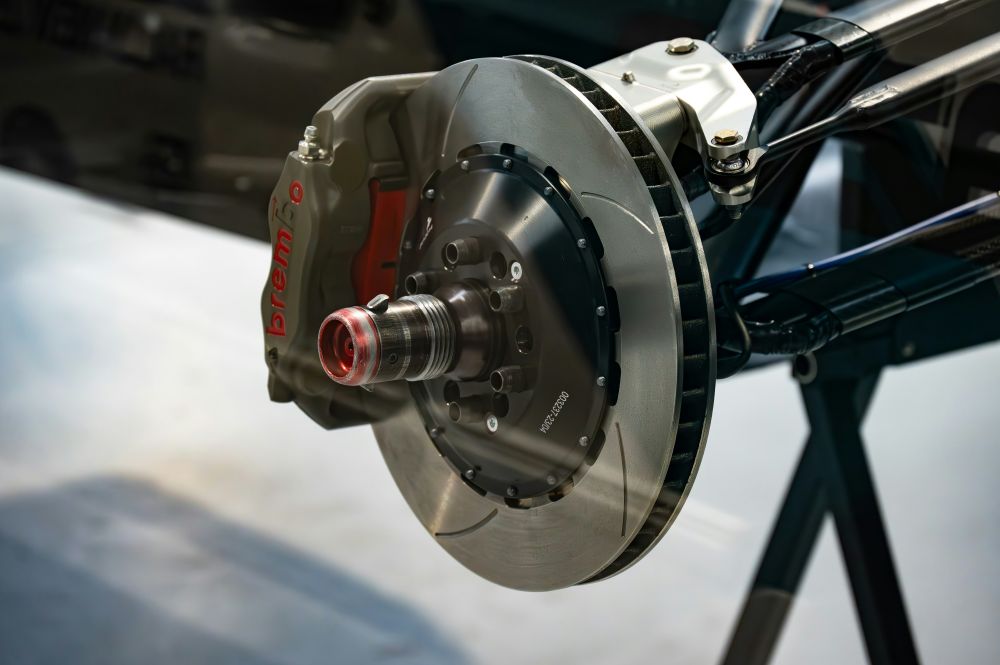Brake Shoes Service
 Understanding Brake Shoes and Their Role in Vehicle Safety
Understanding Brake Shoes and Their Role in Vehicle Safety
When it comes to keeping your vehicle safe on the road, your braking system is one of the most important components—and at the heart of many drum brake systems are the brake shoes.
While disc brakes use pads and rotors, drum brakes rely on brake shoes to create the friction necessary to slow and stop your vehicle. Knowing how brake shoes work, when to replace them, and what options are available can help ensure your vehicle stops smoothly and reliably every time.
What Are Brake Shoes?
Shoes are curved pieces of metal lined with friction material that press outward against the inside of a brake drum when you apply the brakes. This contact creates friction, which slows the rotation of the wheel. Shoes are typically used on the rear wheels of many cars, trucks, and older vehicles, though some heavy-duty or off-road vehicles still use drum brakes all around.
Over time, the friction material on the shoes wears down, reducing braking efficiency. Regular inspection and timely replacement are essential for maintaining safe, responsive braking.
How Shoes Work
When you press the brake pedal, hydraulic pressure from the master cylinder pushes the wheel cylinder pistons inside the drum brake assembly. These pistons force the shoes outward against the drum, generating friction to slow or stop the wheel. When the pedal is released, springs retract the shoes away from the drum, allowing the wheel to spin freely again.
Benefits of Quality Brake Shoes
-
Consistent Braking Performance
High-quality brake shoes provide stable, predictable braking under various driving conditions. They maintain even friction contact and resist fading during extended use. -
Durability and Longevity
Premium materials reduce wear, prevent glazing, and minimize noise. They’re built to withstand heat and heavy braking without losing effectiveness. -
Cost-Effective Maintenance
Drum brakes with brake shoes often cost less to maintain and replace than disc brake systems, making them a practical choice for many vehicles. -
Enhanced Safety
Well-maintained shoes ensure smooth, reliable stops—critical for safety in everyday driving and emergency situations alike.
When to Replace Shoes
Shoes generally last between 30,000 and 70,000 miles, depending on driving habits, vehicle type, and conditions. You may need replacement if you notice:
-
A grinding or squealing noise from the rear brakes
-
Reduced braking performance
-
The parking brake not holding securely
-
Visible thinning or cracking of the friction lining
Ignoring worn shoes can damage the brake drums and increase repair costs. Regular brake inspections can help catch wear early.
Common signs include squealing, grinding, or reduced braking power, especially from the rear wheels. If your parking brake feels weak or your vehicle takes longer to stop, it’s time for an inspection.
Not always. Depending on driving habits and brake system design, the leading shoe (the one that engages first) may wear faster than the trailing shoe. During replacement, it’s best to replace both shoes on an axle for even performance.
Other Services:
Towns Serviced:
Mundelein, IL
Vernon Hills, IL
Green Oaks, IL
Mettawa, IL
Knollwood, IL
Grayslake, IL
Gurnee, IL
Lake Forest, IL
North Chicago, IL
Waukegan, IL
Makes Serviced:
Toyota
Volkswagen
Hyundai
Ford
Honda
Nissan
Kia
Chevrolet
General Motors
Stellantis
BMW
Mercedes-Benz
Subaru
Jeep
Tesla
Mazda
Volvo
Audi
Lexus
